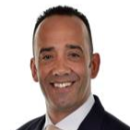On the Sofa with Andrew Geake: Changing Employer and Employee Expectations in the New World of Work
SHL’s Managing Consultant, Andrew Geake talks about how employee expectations have changed in the past years and how leaders are adapting to the new world of work.
Share
In this month’s “On the Sofa” blog series, we are joined by Andrew Geake, Managing Consultant/Solution Architect at SHL who discusses how expectations have changed for candidates and employees during his time at SHL and how leading organizations are adapting to ensure they attract and retain the best talent.
Tell us a bit about your role at SHL.
I support clients with their talent acquisition and talent management needs. I am normally brought in to bring some knowledge and thought leadership about our industry and have open conversations to understand how we can help with any challenges that organizations are having with their talent—whether that be around hiring or managing their existing talent to support the business achieve their goals.
What do you enjoy most about your role?
I really enjoy the variety, both in the types of organizations I work with, which range from smaller local businesses to global multinationals, and the industries that they operate in. As well as getting to know more about these various industries and the particular challenges that they may face, I also get a chance to speak with a breadth of people and colleagues across the world which helps me understand different perspectives.
I am fortunate to work in an area (talent management) that is continuously evolving—there are always new theories and scientific studies being produced that keep you on your toes and make for great conversations. For example, I have had a few clients recently ask me about social capital as something they were keen to discuss further so it is always interesting to see how certain ideas permeate their way into organizational thinking.
During your time at SHL, what have been the biggest trends you have seen change with regards to customer requirements?
Most organizations would say people are their most important asset, but previously I don’t think they necessarily backed this up with actions or investments. Now clients have become more sophisticated and acknowledge the importance of having the right tools to hire, manage, and develop people, so it is more a case of how best to utilize them. With numerous providers, questions are about if these solutions are robust and scalable and if can they partner with this organization to drive improvements across the entire business.
I have also seen more focus on leadership and future planning, so team leaders are questioning ‘Do we have the right people in place to get us to where we need to be? What is our bench strength?’ These are questions that leaders are now proactively trying to answer so they can have the best possible chance of success.
How do you think employee expectations have changed over the past few years?
Candidates have more opportunities than ever before and are much more likely to leave their roles with the confidence that they can take their capabilities elsewhere if they feel the fit is not right. The proportion of people doing independent and flexible work is higher than ever so there is an expectation that these benefits such as hybrid working and flexibility would remain when moving to other organizations.
Also, more employees are concerned with aligning their values with the values of the organization they work for above all else. There is research showing Gen Z are willing to take a drop in pay to join an organization whose values fit with theirs. This means wider themes such as DEI, mental health, and even climate change all need consideration so employees are proud to be associated with the brand values of the organization they are working for.
More employees are concerned with aligning their values with the values of the organization they work for above all else.
What is your favorite feature within one of our solutions and why?
Our automated feedback is really powerful—if someone has invested time in doing an assessment or researching the organization, feedback is important for keeping them engaged in that process. Successful or not, they will feel like it’s not time wasted and at least they have some feedback that will give them something to consider in future applications. Having this automated just takes the pressure off the team administering the tests and provides a great candidate experience that is not labor intensive.
The other feature I love is hidden gems, which really is a powerful way to provide more transparency and objectively identify those that have the strength of potential to succeed within the organization. It is a way to lessen the likelihood of bias creeping in by using data to make diverse and fair decisions rather than relying on anecdotal feedback that could easily be biased toward certain groups.
You have spoken about some of the things that HR now need to consider—how can they ensure that they support the business as effectively as possible?
Hiring will always be tactical in some instances so it could be ‘we need 100 people doing this job—let’s go and hire them' but most of the time aligning with the overall business strategy helps understand how current employees fit into that and the skills gaps that need filling.
Ideally, organizations have talent architectures in place to measure competencies and behaviors and see what they can leverage internally, the development that might be needed, and then the external hiring requirements. Understanding your internal talent also enables skills transfer between departments so, through lenses and insights, organizations can find the right people internally to spearhead a new operation that is starting up for example. At an individual level, it is also a positive message to show you have these opportunities for career progression.
For less mature organizations, they would likely still have performance reviews or feedback from managers to assess talent, so what they need is some rigor applied to those processes to ensure they are fair and measurable. It is good to take a step back and see how what you are doing applies to the business and that will help everyone buy in to the process. The more transparent the organization is about the talent landscape, the easier it is to make those people's decisions.
What do you think HR will look like in 10 years?
There will be a lot more focus on what the data is saying and people analytics so businesses can make more decisions based on data. This data would also be available more readily for employees and candidates, so they have awareness of their own personal development and look to companies that enable them to achieve the learning in areas they want to focus on.
The concept of talent passports may well become commonplace, so someone at 25 years old would think ‘this is what I have done, this is where I want to go, and these are the companies offering the experience I need to get there’. This is opposed to the ‘job for life’ approach where people were content to stay somewhere for 25 years and work their way up from an apprentice to junior manager to the director for example.
Find out more about how SHL can help your organization make data-driven decisions to engage your employees, help with targeted development and plan for future success with our talent management solutions.









